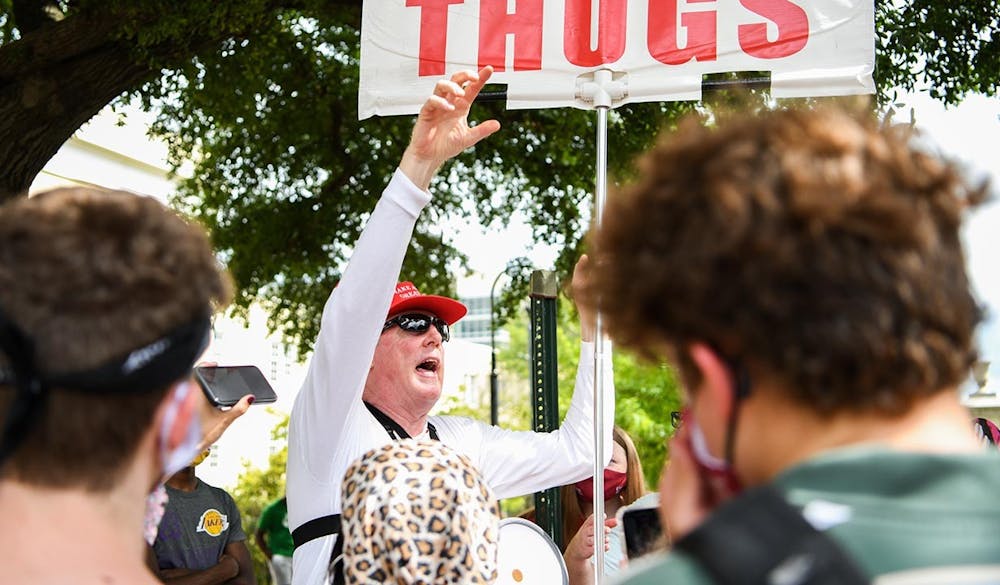It’s easy to see the current political climate as chaotic and confusing, but one way to get a grasp on what’s happening is to understand a wide variety of beliefs. To do this, it’s important to look at some of today’s most influential political ideologies.
Let’s start with the dominant ideology of the United States: Liberalism. While “liberal” is often used in the U.S. to refer to the Democratic Party, it has a broader definition that stems from the European “enlightenment." Liberals believe in representative democracy, market capitalism and the ideas of universal rights (including a right to private property). Limited government is essential to a liberal line of thinking.
Most mainstream political discourse in the modern U.S. is technically liberal — it’s based on the liberal foundations of the Constitution, for example. However, the modern American conservative movement separates itself from the rest of mainstream politics through opposition towards government programs and social movements meant to help marginalized groups. Instead, they support maintaining or returning to a more traditional social order and economic hierarchy.
Some modern liberals are called “social democrats." Social democracy is a form of liberalism that supports a larger economic role for the state. Nearly every developed liberal state has some degree of social democracy, ranging from Nordic countries' large public sector and extensive welfare state to the U.S.’s much smaller welfare system. It can be contrasted with neoliberalism, which focuses on privatization, deregulation and free trade.
It’s important to note that today’s social democrats are not really socialists (yes, that includes Bernie Sanders), even though the term originated in the 19th century as a form of socialism. Socialism refers to a large range of different theories and practices which focus around the goal of overthrowing capitalism and replacing it with an economy run and organized by the community as a whole.
While Karl Marx was not the first socialist, his theories (called Marxism) are essential to modern socialist thought. Marx’s ideas center around the conflict between the two main social classes of modern capitalism: the ruling bourgeoisie, who own and control the means of production, and the working proletariat, who sell their ability to do labor to the bourgeoisie in exchange for wages. Marx argues the proletariat, or working class, should organize themselves and revolt against the bourgeoisie in order to bring about a stateless and classless society called communism.
Countless other theorists and revolutionaries across the world have built on Marx’s work. This means the original thoughts of Marx and his partner Friedrich Engels are a part of the larger theories of communism, which arguably includes anyone who wishes to bring about a communist society.
Another strand of revolutionary anti-capitalism is anarchism, which opposes all forms of hierarchy, including the state and capitalism. If that sounds like communism, you’re not wrong. The end goals of the two groups are very similar, especially after the development of ideas like anarcho-communism.
One difference is strategy: Anarchists often prefer decentralized organizing instead of party-building because of their opposition to the hierarchies of a large party. There are also disagreements over the idea of a transitional stage between capitalism and communism (called the dictatorship of the proletariat) where the working class would suppress the bourgeoisie using state power. Many communists believe that it will be necessary, but anarchists argue it would become a new tool for oppression.
Last and certainly least is fascism, which argues the state should be completely dominant over society. Fascism is motivated by extreme authoritarianism and nationalism, along with a desire to return to a (usually fictional) national past — meaning that it’s hard to give it a firm definition because a nationalist movement will look somewhat different in each nation. However, fascist movements always share anti-democratic, militaristic and racist ideas.
The modern American far right – including the right wing of the GOP, the Proud Boys, Three Percenters and other groups – often couch their beliefs in terms like “conservative” or “anti-government.” However, they’re almost certainly fascist at heart, and the difference between a “proper” fascist movement and plain old authoritarian ultranationalism is usually meaningless anyways.
These descriptions barely scratch the surface of today's variety of political thought, but they're important for understanding some of the basic disagreements between the different visions of how society should be organized.

